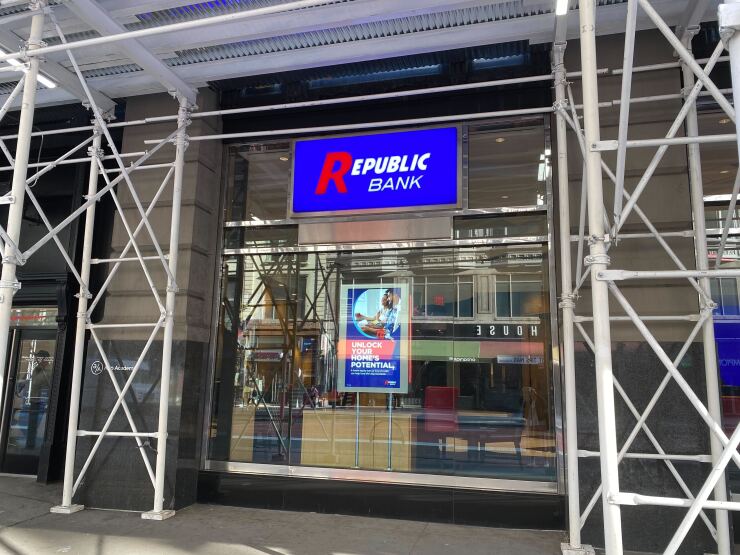
Leo Tolstoy famously said in Anna Karenina: "All happy families are alike, but each unhappy family is unhappy in its own way." The same may be said of banks — all healthy and solvent banks are the same, but each distressed bank is unhappy in its own way.
Republic First in Philadelphia, the troubled $6 billion-asset institution that has been circling the bowl for more than a year,
Certainly, Republic First was unhappy in its own way. Not one but two activist investor groups
The failure of Republic First, then, is on the one hand a blip — banks fail all the time (or at least
Since the banking industry began walking in the Silicon Valley of death last March,
Those seem like boneheaded mistakes, but a lot of banks made them for good reasons: Intelligent people said a few years ago that inflation was transitory and that long-dated bonds were a safe play; uninsured deposits are cheap and the risk of failure is low (ha ha!); and CRE is one of the few industry sectors in which smallish regional banks can compete head-to-head with their bigger competitors.
Second-guessing how and why these banks got in this place is perhaps a column for another day. A bigger and more pressing question is what these banks — and, by turns, the Biden administration and bank regulators — are going to do to get to the other side of whatever this is. From a bank's perspective, there are four choices: Do nothing, self-liquidate, merge with a perhaps also-distressed peer or be acquired by a larger bank. Doing nothing runs the substantial risk of having one of those remaining three choices made for you, so even though that is what many banks are likely to do, let's leave that aside for a moment. Self-liquidation likewise will result in one's assets being acquired by either another healthy (likely larger) bank or another unhealthy (likely peer) bank, so we can leave that one aside, too.
So the real question is: Should these banks be acquired by the larger banks, or should such an acquisition be discouraged? Politically, there is a
An unfortunate truth about banking is that when two troubled banks merge, they just become one bigger troubled bank. The most reliable way to make the trouble go away is for troubled banks to merge with larger, healthy banks. That may not be a popular opinion within the administration — and to be sure, that may not be the inevitable outcome for each case — but closing the off-ramp for troubled banks for primarily political reasons will likely do more harm than good.
Allowing larger banks to take over banks that are in these dire straits may also offer regulators a silver lining. If the biggest banks are going to get bigger, their status as critical nodes of the U.S. economy is all the more enhanced — were they to fail, such a failure would be all the more systemically significant. That would give the argument for higher regulatory capital standards on the largest banks — something that has been
But before we even get there, regulators have to think about how to approach what will likely be a trickle of similar bank failures and/or acquisitions over the coming months and years. If that regulatory quiver includes letting big banks buy troubled, smaller peers, I suspect that would be useful in bringing the banking industry into a brighter tomorrow even if there is a political price to pay. After all, as Tolstoy also said in Anna Karenina: "It's much better to do good in a way that nobody knows anything about it."






